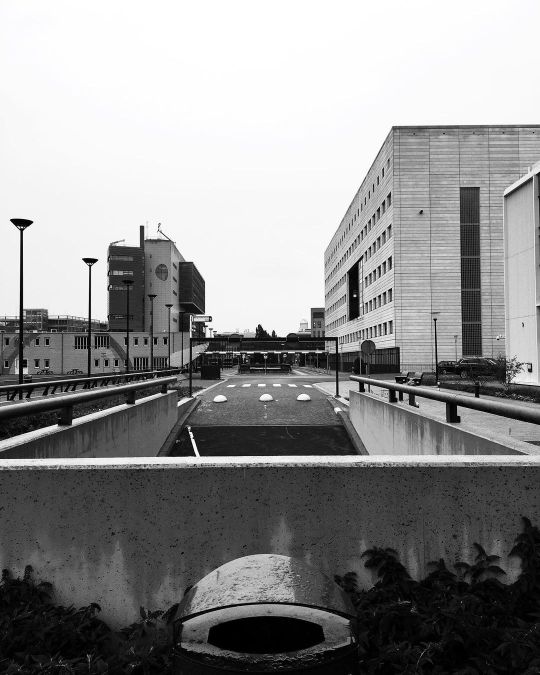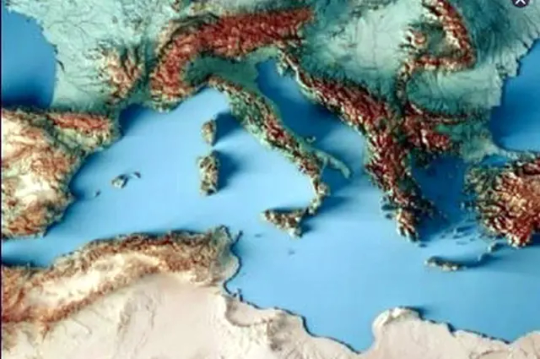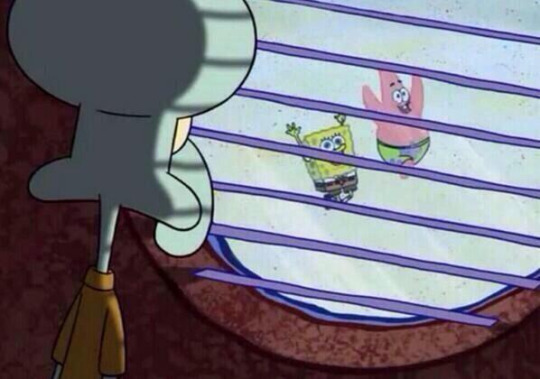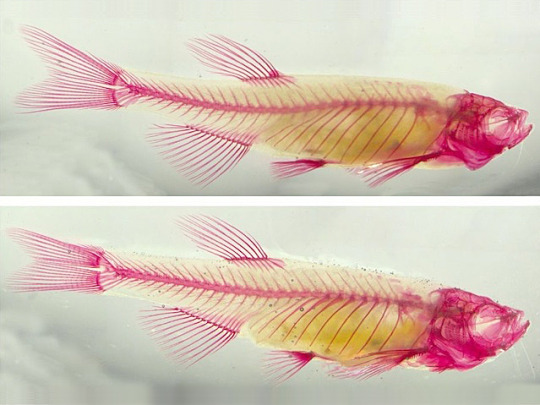#Radboud
Photo

#radboud#sober https://www.instagram.com/p/Ci5YfWHtn5-TrSapk807712wAw569mkXdKO7l80/?igshid=NGJjMDIxMWI=
2 notes
·
View notes
Text
A rischio 38.500 km2 di coste Italiane entro fine secolo

Ingv, al rialzo le stime dell'aumento del livello marino sulle coste entro la fine del secolo. Anzidei, co-autore dello studio: "Il movimento verso il basso del suolo dovuto a cause naturali o antropiche, ha un ruolo cruciale nell'accelerare l'aumento del livello del mare lungo le coste, innescato dal riscaldamento globale a partire dal 1880".
Le proiezioni di aumento del livello del mare, pubblicate nel 2021 dall'Intergovernmental Panel on Climate Change (IPCC) nel Report AR6, sarebbero sottostimate lungo le coste.
È questo il risultato della ricerca "Sea level rise projections up to 2150 in the northern Mediterranean coasts", appena pubblicata sulla rivista internazionale Environmental Research Letters da un team di ricercatori dell'Istituto Nazionale di Geofisica e Vulcanologia (INGV) e del Radboud Radio Lab del Dipartimento di Astrofisica dell'Università di Radboud (Olanda).
La subsidenza, cioè il lento movimento verso il basso del suolo dovuto a cause naturali o antropiche, ha un ruolo cruciale nell'accelerare l'aumento del livello del mare lungo le coste, innescato dal riscaldamento globale a partire dal 1880", spiega Marco Anzidei, ricercatore dell'INGV e co-autore dello studio.
"Le nostre analisi mostrano che, proprio a causa della subsidenza, in alcune zone del Mediterraneo il livello del mare sta aumentando a una velocità quasi tripla rispetto alle zone stabili", aggiunge Antonio Vecchio, ricercatore della Radboud Universiteit Nijmegen e primo autore dello studio.

In rosso sono evidenziate 163 pianure costiere principali più esposte all'aumento del livello del mare al 2100-2150.
Il Mediterraneo, infatti, è caratterizzato da una forte variabilità dei movimenti verticali delle coste, che variano da zona a zona a causa dall'attività tettonica, vulcanica e antropica", continua Enrico Serpelloni, ricercatore dell'INGV e co-autore dello studio.
Per la nostra ricerca, condotta nell'ambito dei progetti SAVEMEDCOASTS, SAVEMEDCOASTS2 e Pianeta Dinamico, abbiamo utilizzato i dati delle numerose stazioni geodetiche satellitari GNSS poste entro 5 km dal mare, con cui possiamo calcolare, con precisione millimetrica, le velocità di spostamento verticale del suolo".
Alla luce di queste evidenze, il team di ricercatori ha ricalcolato le proiezioni dell'IPCC fino al 2150 in 265 zone del Mediterraneo, anche in corrispondenza dei 51 mareografi delle reti di monitoraggio internazionali, includendo nelle analisi i dati relativi alla subsidenza.
I risultati mostrano differenze massime e minime rispetto al Report dell'IPCC che vanno, rispettivamente, da +109 cm a -77 cm circa, con un valore medio più alto di circa 8 cm", spiega Antonio Vecchio.
L'aumento del livello del mare e la subsidenza implicano che circa 38.500 km2 di coste del Mediterraneo - di cui circa 19.000 km2 nel solo settore settentrionale del bacino - saranno presto più esposte al rischio di inondazione marina, con conseguenti maggiori impatti sull'ambiente, sulle attività umane e sulle infrastrutture.
È quindi necessario intraprendere azioni concrete a sostegno delle popolazioni costiere che saranno sempre più vulnerabili all'aumento del livello marino e ai maggiori rischi a questo collegati entro la fine di questo secolo e oltre", conclude Marco Anzidei.
Read the full article
#cambiamentoclimatico#INGV#inondazionemarina#livellodelmare#mediterraneo#PianetaDinamico#Radboud#SAVEMEDCOASTS
1 note
·
View note
Text
Salt batteries can store summer heat to be used in winter, but which salt works best for the purpose? On 19 December, Lian Blijlevens will defend her PhD thesis on her research into salt for heat storage at Radboud University.
Although a growing number of roofs sport solar panels, these panels only convert light from the sun into electricity. The solar panels themselves are also heated by the sun, but this heat is now being lost. Blijlevens: "The heat can be extracted by a solar boiler and used to heat your house or shower. However, in summer you always generate more solar heat than you use, and in winter you have less. So what we need is a way to preserve that heat.
Read more.
12 notes
·
View notes
Text
watching my home country get an amazing trans law that will make changing your name/gender easier, while the country i live in is making it harder and harder to get basic trans care and is making people wait three years to get a dysphoria diagnosis

#i could just move there....#FUCK YOU AMC AND UMC AND RADBOUD AND LDGBSLDGBAJDGB#mostly fuck the system. not the people who give trans care#transgender#trans#trans zorg#selbstbestimmungsgesetz#nl#gr#dual nationality problems
4 notes
·
View notes
Text

1 note
·
View note
Text
Reizen masseert de ziel, beweert Ap Dijksterhuis
bron beeld: rtlnieuws.nl
Het tegenovergestelde van heimwee is wegwee, zo lezen we in Wie (niet) reist is gek van psycholoog en reiziger Ap Dijksterhuis (1968). Een lofzang op het reizen, het thuis verlaten uit nieuwsgierigheid. Dijksterhuis beweert dat reizen invloed heeft op onze gesteldheid; het houdt het brein soepel; het reikt inspiratie en creativiteit aan; haalt vooroordelen onderuit; maakt…

View On WordPress
#21-ste eeuws#Andersen#atlas#doelen#Einstein#geestelijk#gesteldheid#gezond#hoogleraar#impulsen#informatie#intuïtief denken#lichamenlijk#lofzang#nieuwsgerigheid#onderbewustzijn#psycholoog#Radboud Universiteit#reizen#thuisblijvers#wegwee#Zutphen
0 notes
Audio
(Radboud Reflects, verdiepende lezingen) moeten ondernemen om de insecten te redden. Binnen de Europese Unie staat het verbieden van pesticiden inmiddels hoog op de agenda en in Engeland is het al verboden. Daarnaast kunnen we ook zelf helpen: “Dit kan door bijvoorbeeld meer groen in je tuin te maken, en daarmee meer leefgebied voor insecten te scheppen. Ook is het belangrijk om verantwoorde keuzes te maken met de producten die we kopen. Als we echt willen dat er iets verandert, moeten we overwegen om niet langer producten te kopen waar pesticiden voor zijn gebruikt.”
#SoundCloud#music#Radboud Reflects#verdiepende lezingen#English#Hans de Kroon#General Food For Thought
1 note
·
View note
Text
2023 Radboud University Master’s Scholarship Program for International Students - Apply Now
2023 Radboud University Master’s Scholarship Program for International Students – Apply Now
Radboud University Master’s Scholarship Program is currently open for applications from eligible and outstanding international students of non-EU/non-EEA countries who wish to enrol in a master’s degree program at the University commencing for 2023/2024 academic session.
The RadboudScholarshipProgramme is a very selective scholarship programme. It offers talented, highly motivated, non-EEA…

View On WordPress
#2023 Radboud University Master’s Scholarship Program for International Students - Apply Now#Radboud University acceptance rate#Radboud University application deadline#Radboud University application fee#Radboud University international students#Radboud University Master&039;s programs#Radboud University Master&039;s requirements#Radboud University Scholarship 2023#Radboud University scholarship for international students 2023#Radboud University scholarship for undergraduate students#Radboud University tuition fees for international students#University of Radboud courses#university of radboud netherland fully-funded scholarships 2022#University of Twente Scholarship 2023
0 notes
Text
Opperdoezer ronde aan huis bezorgt voor Stichting Caritas Ukraine-Holland
Lokaal nieuws: 'Opperdoezer ronde aan huis bezorgt voor Stichting Caritas Ukraine-Holland'
MIDDENMEER – Eén van de verslaggevers van De Meerpeen is vandaag voorzien van een zak Opperdoezer Rondes. Rotary Radboud Medemblik verkoopt deze delicatesse namelijk voor een goed doel, het sponsoren van de transportkosten van Stichting Caritas Ukraine-Holland.
Rotary-lid Renze Bouthoorn, onlangs nog geïnterviewd voor de rubriek “De Hete Aardappel” van het Meerpeen Magazine, kwam déze zak…

View On WordPress
0 notes
Text
Kasteel Radboud
In deze serie bezoek ik kastelen in Nederland, om hun geschiedenis te achterhalen en hun mysteries te ontdekken. Ik hoop door het delen van het verhaal dat deze plekken tot leven komen. Deze keer heb ik een bezoek gebracht aan kasteel Radboud in Medemblik. Ook dit kasteel is kortgeleden onder de loep genomen. Welke ontdekkingen zijn er gedaan?
In het Noord-Hollandse dorpje Medemblik staat…

View On WordPress
0 notes
Text
New theoretical research by Michael Wondrak, Walter van Suijlekom and Heino Falcke of Radboud University has shown that Stephen Hawking was right about black holes, although not completely. Due to Hawking radiation, black holes will eventually evaporate, but the event horizon is not as crucial as had been believed. Gravity and the curvature of spacetime cause this radiation too. This means that all large objects in the universe, like the remnants of stars, will eventually evaporate.
Using a clever combination of quantum physics and Einstein's theory of gravity, Stephen Hawking argued that the spontaneous creation and annihilation of pairs of particles must occur near the event horizon (the point beyond which there is no escape from the gravitational force of a black hole).
A particle and its anti-particle are created very briefly from the quantum field, after which they immediately annihilate. But sometimes a particle falls into the black hole, and then the other particle can escape: Hawking radiation. According to Hawking, this would eventually result in the evaporation of black holes.
In this new study the researchers at Radboud University revisited this process and investigated whether or not the presence of an event horizon is indeed crucial.
Continue Reading
176 notes
·
View notes
Photo

#radboud #sober https://www.instagram.com/p/Ci5Xnk7Ndn892wp_8ywgNhlcmz0fDZ5GfIvz4M0/?igshid=NGJjMDIxMWI=
1 note
·
View note
Photo

Never-before-seen way to annihilate a star Most stars in the Universe die in predictable ways, depending on their mass. Relatively low-mass stars like our Sun slough off their outer layers in old age and eventually fade to become white dwarf stars. More massive stars burn brighter and die sooner in cataclysmic supernova explosions, creating ultradense objects like neutron stars and black holes. If two such stellar remnants form a binary system, they also can eventually collide. New research, however, points to a long-hypothesized, but never-before-seen, fourth option. While searching for the origins of a long-duration gamma-ray burst (GRB), astronomers using the Gemini South telescope in Chile, part of the International Gemini Observatory operated by NSF’s NOIRLab, and other telescopes [1], have uncovered evidence of a demolition-derby-like collision of stars or stellar remnants in the chaotic and densely packed region near an ancient galaxy’s supermassive black hole. “These new results show that stars can meet their demise in some of the densest regions of the Universe where they can be driven to collide,” said Andrew Levan, an astronomer with Radboud University in The Netherlands and lead author of a paper appearing in the journal Nature Astronomy. “This is exciting for understanding how stars die and for answering other questions, such as what unexpected sources might create gravitational waves that we could detect on Earth.” Ancient galaxies are long past their star-forming prime and would have few, if any, remaining giant stars, the principal source of long GRBs. Their cores, however, are teeming with stars and a menagerie of ultra-dense stellar remnants, such as white dwarf stars, neutron stars, and black holes. Astronomers have long suspected that in the turbulent beehive of activity surrounding a supermassive black hole, it would only be a matter of time until two stellar objects collide to produce a GRB. Evidence for that type of merger, however, has been elusive. The first hints that such an event had occurred were seen on 19 October 2019 when NASA’s Neil Gehrels Swift Observatory detected a bright flash of gamma rays that lasted for a little more than one minute. Any GRB lasting more than two seconds is considered “long.” Such bursts typically come from the supernova death of stars at least 10 times the mass of our Sun — but not always. The researchers then used Gemini South to make long-term observations of the GRB’s fading afterglow to learn more about its origins. The observations allowed the astronomers to pinpoint the location of the GRB to a region less than 100 light-years from the nucleus of an ancient galaxy, which placed it very near the galaxy’s supermassive black hole. The researchers also found no evidence of a corresponding supernova, which would leave its imprint on the light studied by Gemini South. “Our follow-up observation told us that rather than being a massive star collapsing, the burst was most likely caused by the merger of two compact objects,” said Levan. “By pinpointing its location to the center of a previously identified ancient galaxy, we had the first tantalizing evidence of a new pathway for stars to meet their demise.” In normal galactic environments, the production of long GRBs from colliding stellar remnants such as neutron stars and black holes is thought to be vanishingly rare. The cores of ancient galaxies, however, are anything but normal and there may be a million or more stars crammed into a region just a few light-years across. Such extreme population density may be great enough that occasional stellar collisions can occur, especially under the titanic gravitational influence of a supermassive black hole, which would perturb the motions of stars and send them careening in random directions. Eventually, these wayward stars would intersect and merge, triggering a titanic explosion that could be observed from vast cosmic distances. It is possible that such events occur routinely in similarly crowded regions across the Universe but have gone unnoticed until this point. A possible reason for their obscurity is that galactic centers are brimming with dust and gas, which could obscure both the initial flash of the GRB and the resulting afterglow. This particular GRB, identified as GRB 191019A, may be a rare exception, allowing astronomers to detect the burst and study its after effects. The researchers would like to discover more of these events. Their hope is to match a GRB detection with a corresponding gravitational-wave detection, which would reveal more about their true nature and confirm their origins, even in the murkiest of environments. The Vera C. Rubin Observatory, when it comes online in 2025, will be invaluable in this kind of research. “Studying gamma-ray bursts like these is a great example of how the field is really advanced by many facilities working together, from the detection of the GRB, to the discoveries of afterglows and distances with telescopes like Gemini, through to detailed dissection of events with observations across the electromagnetic spectrum,” said Levan. “These observations add to Gemini’s rich heritage developing our understanding of stellar evolution,” says Martin Still, NSF’s program director for the International Gemini Observatory. “The time sensitive observations are a testament to Gemini’s nimble operations and sensitivity to distant, dynamic events across the Universe.” IMAGE....Astronomers studying a powerful gamma-ray burst (GRB) with the International Gemini Observatory, operated by NSF’s NOIRLab, may have observed a never-before-seen way to destroy a star. Unlike most GRBs, which are caused by exploding massive stars or the chance mergers of neutron stars, astronomers have concluded that this GRB came instead from the collision of stars or stellar remnants in the jam-packed environment surrounding a supermassive black hole at the core of an ancient galaxy. CREDIT International Gemini Observatory/NOIRLab/NSF/AURA/M. Garlick/M. Zamani
59 notes
·
View notes
Text

Mutant Gene Model
Zebrafish with a mutation in a gene called FOXE1 show hypothyroidism and cranio-facial abnormalities, features of the human genetic disorder Bamforth-Lazarus syndrome
Read the published research article here
Image from work by Sophie T Raterman and colleagues
Department of Dentistry-Orthodontics and Craniofacial Biology, Research Institute for Medical Innovation, Radboud University Medical Center, Nijmegen, Netherlands
Image originally published with a Creative Commons Attribution – NonCommercial – NoDerivs (CC BY-NC-ND 4.0)
Published in bioRxiv, February 2024 (not peer reviewed)
You can also follow BPoD on Instagram, Twitter and Facebook
10 notes
·
View notes
Text

Will studying a new language interfere with any others you speak? (Shayla Love, Psyche, Sep 11 2023)
"When Julie Sedivy’s father died, she returned home to the Czech Republic and discovered another loss: Czech, her native tongue.
In her book Memory Speaks: On Losing and Reclaiming Language and Self (2021), Sedivy, a language scientist in Canada, describes her experience with language attrition – the forgetting of a language once known, even one learned long ago.
For her, language attrition felt connected to her learning English, which crowded out the Czech.
‘Like a household that welcomes a new child, a single mind can’t admit a new language without some impact on other languages already residing there,’ Sedivy wrote.
This is a frequent observation among multilinguals, that ‘Languages can co-exist, but they tussle, as do siblings, over mental resources and attention,’ as she put it. (…)
When new learning interferes with older learning, it’s called ‘retroactive interference’.
This is common when learning more than one language, says Kristin Lemhöfer, the senior author on the recent paper, and an associate professor in psycholinguistics at Radboud University in the Netherlands.
If you first learn that ‘dog’ is chien in French, and then you learn that it’s perro in Spanish, remembering un chien could become more effortful later.
One lingering question about retroactive interference is whether new learning can interrupt much older learning that’s been consolidated into long-term memory, rather than something learned more recently.
This new study showed it’s possible; Lemhöfer was surprised that learning Spanish words impacted the recall of the English that the Dutch participants had learned many years previously.
And interestingly, the experiments also revealed that interference can arise from simply learning a new language, whether or not it is used.
After seeing this interference demonstrated in the lab, Lemhöfer says it’s something that language learners should be prepared for: multilingualism may simply be taxing on the brain.
Multilinguals have been shown to take longer to find and produce a word in any of the languages they speak, and they can experience tip-of-the-tongue-states more often, she says.
Lemhöfer is German, spent a year in London, and then went to the Netherlands for her PhD – so she has plenty of firsthand experience with this phenomenon.
‘When I started to learn Dutch, my English was suddenly blocked,’ she says.
‘When I tried to speak it, a lot of Dutch words came out, which was embarrassing at times. It only disappeared once my Dutch became more stable, and I spoke more English again.’
It may not be completely avoidable, but Lemhöfer thinks that these effects can be alleviated by continuing to use the language that’s being forgotten or interfered with.
‘Even though we did not empirically test that in that study, we strongly believe that the forgetting effects we observed can be avoided by continuing to use the other language, too,’ Lemhöfer says."
11 notes
·
View notes
Text



On October 17, 1923, the Roman Catholic University of Nijmegen, now Radboud University in Nijmegen, was founded. King Willem-Alexander attended the academic session today on the occasion of the 100th anniversary. October 17, 2023.
📷 Royal House of the Netherlands
9 notes
·
View notes